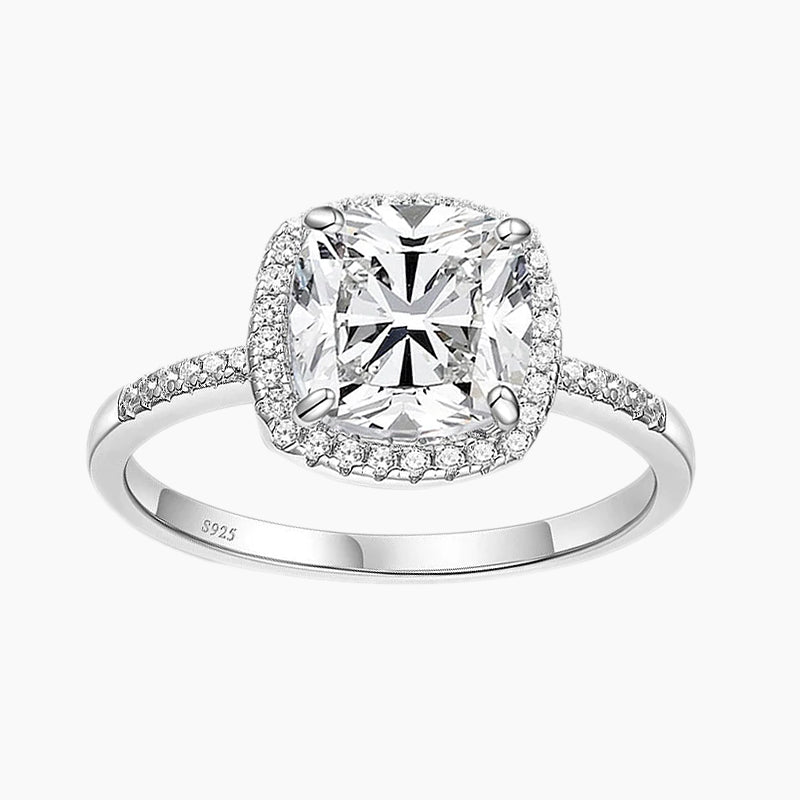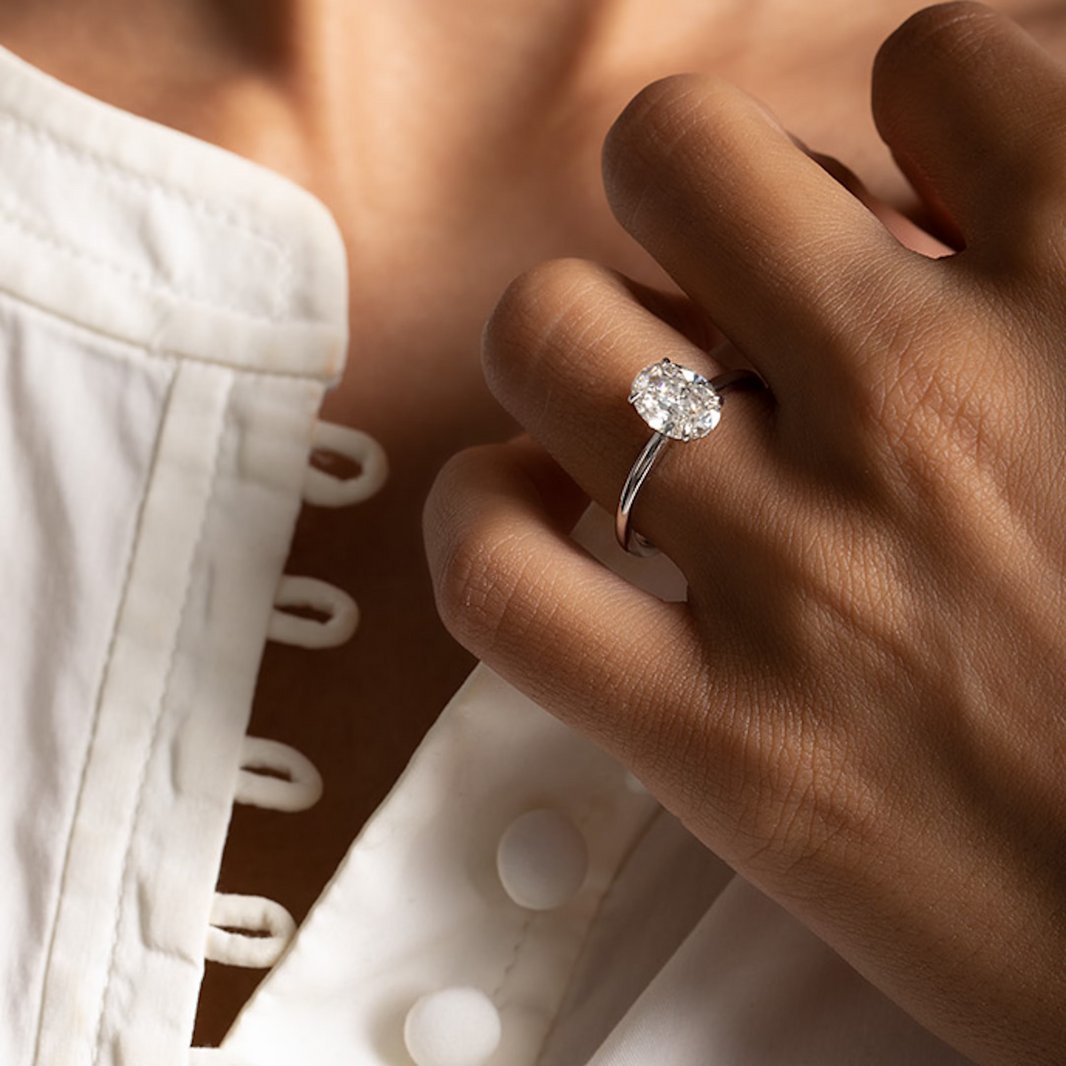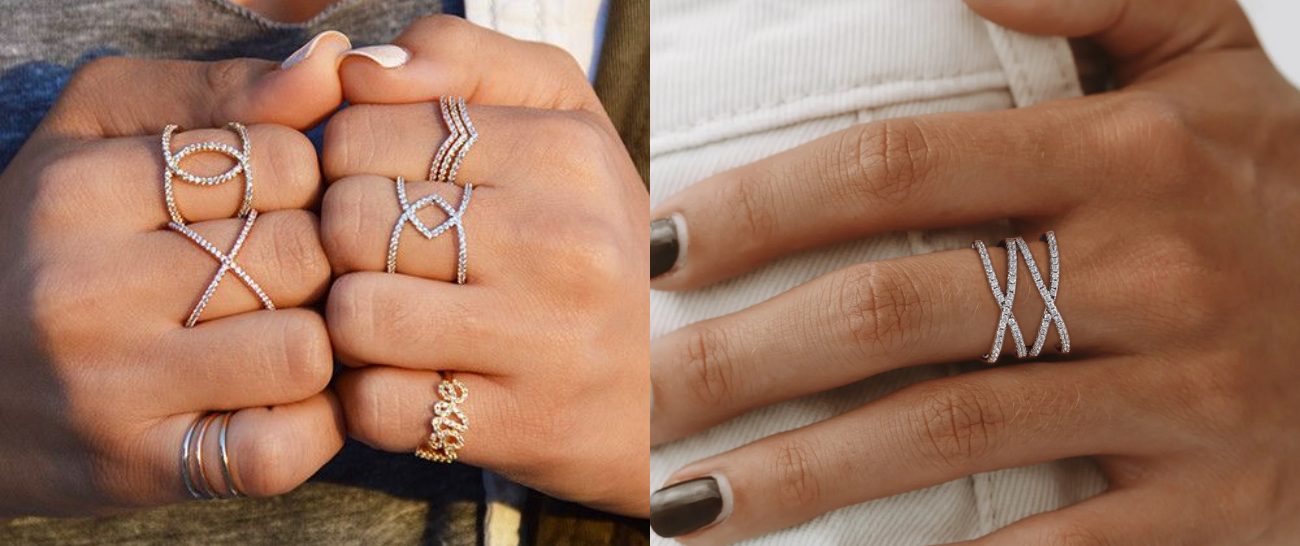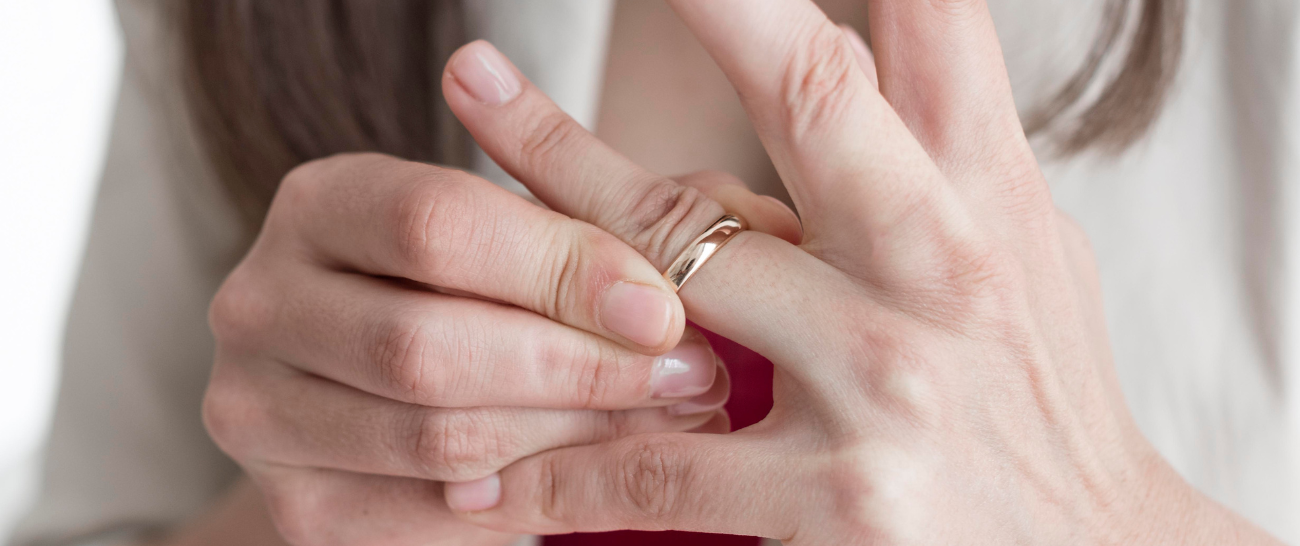Table of Contents
Introduction
The thumb stroked the raised lines of the cross, and touched the tangled curves like Celtic vines. The cross was wrapped with thorns, as if someone had twisted the pain into a flower. All crosses are cracks in time. Some people poured prayers into them, some filled them with rebellion, and more people just silently took its sharp edges, letting the pain grow into new shapes in their flesh and blood. Just like at this moment, the small words he engraved on the inside of the ring are burning in his body temperature - "Tenebrae lux mea" Darkness is my light. This article will introduce you to the meaning and significance of the cross ring.
The Origins and Symbolism of the Cross
The origin and symbolic meaning of the cross spans thousands of years of human civilization, integrating multiple connotations of religion, culture, art and power. Its story is both sacred and stained with blood and dust of change.
-
Origin: Common symbols of ancient civilizations
Prehistory and primitive worship
Metaphors of the sun and the universe: In the rock paintings of the Neolithic Age, the cross is often combined with the sun wheel and the four directions, symbolizing the union of heaven and earth and the cycle of life (such as the "sun cross" in Northern Europe).
Tools and weapons: Early humans used crossed sticks to make fire and hunt, and the cross may represent the core technology of survival.
Cross variants of ancient civilizations
Egyptian Ankh Cross (☥): A cross with a ring on the top, symbolizing life and immortality, the gods holding the Ankh grant the pharaoh eternal life.
Mesopotamian Cross: In Sumerian cuneiform, the cross represents "star" or "sacred", which is related to celestial worship.
Indian Swastika: An auspicious symbol in Buddhism and Hinduism, symbolizing the cycle and harmony of the universe (later distorted by the Nazis).
The cruel imprint of Rome
Before the rise of Christianity, the cross was the instrument of execution of slaves and rebels in the Roman Empire. The victims were nailed to a wooden rack and died in agony, a way of death considered a symbol of shame.
-
Complete Reshaping of Christianity
The Turning Point of Suffering and Redemption
In the 1st century AD, Jesus was crucified, making this bloody instrument of torture the core symbol of Christianity.
Early Christians secretly used the fish symbol (ΙΧΘΥΣ), and it was not until the conversion of Constantine the Great in the 4th century that the cross became a public symbol of faith.
Evolution of theological symbols
Sacrifice and love: Jesus' death was seen as atonement for human sins, and the cross became the ultimate embodiment of "God's love".
Victory and resurrection: The Orthodox Church emphasizes "the cross conquers death", and the decorative cross is often seen in Easter ceremonies.
The Path of Suffering and Redemption: In the medieval spiritual tradition, the cross is seen as a spiritual path for believers to imitate the suffering of Christ.
Diversification of forms
Latin cross (✝): Long vertically and short horizontally, symbolizing the torture rack of Jesus's suffering, most commonly used in Catholicism.
Greek cross: The four arms are of equal length, representing universality and balance, and are often seen in Byzantine architecture.
Celtic cross: A cross plus a ring, a fusion of Christianity and ancient Celtic sun worship, engraved with complex tangled patterns.
-
Complex metaphors Beyond Religion
Signs of power
The Crusades (1096-1291) stained the cross with blood, and the warriors embroidered red crosses on their robes, declaring "fighting for God".
In the colonial era, missionaries carried crosses and guns, and symbols became a double-edged sword of cultural conquest.
Multiple deconstructions of modern society
Fashion and rebellion: 20th century punk culture inverted and hollowed out the cross, challenging traditional authority.
Identity: Neo-Nazis distorted the Nordic sun cross, and extremist organizations abused the black cross mark, and the symbol was involved in ideological struggles.
Humanistic care: The Red Cross neutralized the symbol of the red cross on a white background, becoming a symbol of global humanitarian aid.
Philosophy and art
Paul Tillich proposed that "the cross is the penetration and negation of reality by the sacred".
Dalí's "Cross of St. John of Christ" uses a surreal perspective to allow the suspended cross to tear the space-time dimension.
The cross is always in the tension between the sacred and the secular, violence and redemption, the individual and the collective. It can be the worn silver ornaments around the neck of a peasant woman, the trembling prayers of soldiers in trenches, or the cold installation art on the walls of galleries. When humans project their deepest fears and highest hopes onto two intersecting straight lines, this symbol becomes a prism of civilization—in the fragmented light, the eternal entanglement of divinity and humanity is revealed.
What Do Cross Rings Represent?
-
Religion and Redemption
Christian Narrative of the Body
For believers, the cross on the ring is a condensed version of the Bible - Jesus's suffering and resurrection are cast into the coldness of the metal. When the fingertips touch the edges of the cross, it seems to touch the sentence in the Gospel of John: "Greater love has no one than this, that he lay down his life for his friends." This type of ring is often used in religious ceremonies (such as weddings and confirmation ceremonies), and the date of the scripture may be engraved on the inside, becoming a miniature altar that can be carried with you.
Symbiosis of Paganism and the Divine
The ring of the Celtic cross ring alludes to sun worship, the Vikings combined the cross with the battle axe pattern, and the South American natives inlaid the cross with turquoise - when the colonists' symbols of faith collided with the natural gods of the indigenous people, the ring became a cultural hybrid. The wearer may unconsciously continue the faith game of thousands of years ago.
-
Flowers of the Dark Night: The Rebellious Rhetoric of Subculture
The Black Poetics of the Gothic Tribe
In the underground bars of London in the 1980s, the upside-down cross ring was stained with cheap beer and lipstick. For the Gothic group, this is not blasphemy, but a questioning of absolute light - as Nietzsche said: "If you stare long into the abyss, the abyss will stare back at you." The titanium cross ring with hollow bat wings has become a totem of rejecting mainstream values.
Rock music
Kurt Cobain screamed "Jesus Doesn't Want Me" wearing a worn silver cross ring, and Guns N' Roses intertwined the cross and rose. The cross here is a broken icon, carrying the eternal tearing between addiction, trauma and redemption. The scratches on the surface of the metal material are closer to the truth than the brand new polishing.
-
Silent Witness: Miniature Monuments in Personal History
Container of Memory
The date of the Normandy Landing was engraved on the inside of the ring of a World War II veteran, and the horizontal bar of the cross was embedded with the hair of his lover; the rose gold cross ring of a cancer survivor, the vertical bar was inlaid with 33 broken diamonds - exactly the age of Jesus' crucifixion. These private transformations have transformed the cross from a public symbol into a safe for flesh and blood memories.
The intersection of identities
Descendants of immigrants wear cross rings that incorporate the totems of their motherland, and queer groups fill the grooves of the cross with rainbow enamel—when marginalized identities encounter mainstream symbols, rings become a hidden strategy of resistance. As Judith Butler said: "Reuse symbols until they crack into new meanings."
What are the Styles and Designs of Cross Rings?
Classic Latin Cross
Form: Long vertically and short horizontally, with solemn lines, commonly seen in Catholic ritual rings.
Details: The cross on the ring face may be embossed with a crucifix, the inscription INRI (Latin for "Jesus of Nazareth, King of the Jews"), or inlaid with rubies to symbolize holy blood.
Celtic Cross
Logo elements: The center of the cross is a ring, symbolizing the sun and eternity, and the interwoven vines are metaphors for the cycle of life.
Crafts: Enamel filling and inlaid gold craftsmanship are used, and lapis lazuli and turquoise are often used for embellishment.
Byzantine Icon Style
Visual features: complex gold wire flower, cross wrapped saint mosaic portraits, and Greek prayers engraved on the ring arm.
Material: Mainly gold, with deep red garnet or amethyst, reproducing the mysterious aesthetics of the Orthodox Church.
Vampire Aesthetics
Design elements: inverted cross, hollow bat wings, thorns wrapped around the ring, and titanium steel material is aged.
Representative works: Alexander McQueen's "Skull Cross" series, which grafts death images with religious symbols.
Industrial punk
Material collision: rivets and crosses are welded, leather rings are embedded with gear-shaped crosses, and chains are draped.
Color philosophy: Matt black is the main tone, and fluorescent paint is occasionally sprayed on the tip of the cross, like the neon afterimage of an underground club.
Geometric abstraction
Morphological breakthrough: The cross is disassembled into asymmetrical folds, like the fluidity of Zaha Hadid's architecture.
Material experiment: ceramics and titanium are spliced, and mirror polishing produces optical deformation.
Space future style
Technological elements: LED glimmer is embedded in the cross, and the ring adopts a 3D printed mesh structure.
Concept design: The "Floating Cross" series of the German brand Niessing uses magnetism to make the cross rotate in the air.
Bohemian weaving
Craft features: Silver wire is wrapped into a cross, interspersed with turquoise and amber raw stones, and the ring is carved with feather texture.
Cultural hybrid: Indian totem cross with Mexican Day of the Dead painted enamel.
Nordic minimalist nature
Design language: Combination of logs and silver, the cross shape is abstracted as a cross of branches, and Icelandic designers prefer basalt inlays.
Victorian mourning ring
Historical imprint: 19th century black jade cross ring, the ring face hides the hair of the deceased, and the center of the cross is inlaid with pearls to symbolize tears.
Replica elements: Oxidized silver is aged, and the commemorative date is engraved on the inside of the ring.
Art Nouveau
Natural curves: The cross is combined with lilies and dragonflies, such as the lines of Alphonse Mucha's illustrations.
Material: Milky white moonstone cross with gold vines, recreating the aestheticism of Paris in 1900.
Papal authority ring
Historical prototype: Ring of the Fisherman, engraved with the pattern of St. Peter casting a net, and the modern derivative uses a red coral cross to symbolize the authority of the Holy See.
Military Cross Ring
Design inspiration: A variation of the Iron Cross of World War I, with a cross on the ring with an eagle emblem and oak leaves, a tough guy style paired with aged steel.
Gifting a Cross Ring: What It Means
Giving a cross ring is like engraving a secret conversation into metal, and its meaning becomes ambiguous and profound because it carries too many meanings. It may be a vow, or it may be an unsolved puzzle - the answer is hidden in the life of the giver and the receiver.
Anchor of religious ceremony
Given at baptism or confirmation, it symbolizes the inheritance of faith, as Deuteronomy says: "It shall be tied on the hand as a sign, and worn on the forehead as a scripture." Rings engraved with Bible verses (such as "John 3:16") become spiritual armor that can be carried with you. Symbolic gift for clergy The cross ring given by pastors to believers may be inlaid with amethyst (symbolizing repentance), implying the call to "carry the cross and follow the Lord."
Metaphor of forbidden love
The Gothic cross ring is given to lovers, just like the paradox in Baudelaire's "Flowers of Evil" - using the symbol of death to declare eternity, and the ring ring wrapped with thorns implies that "love is sweet pain."In some contexts, the inverted cross ring becomes a symbol of subversive romance, such as the aesthetic projection of "Beauty's Death" in Allen Poe's works.
Giving a cross ring as a gift is essentially throwing the fragments of two souls into the melting pot of symbols. It may solidify into the amber of faith, or it may burst into stardust of misunderstanding. The only certainty is that when the ring slides into the other's knuckles, you have jointly participated in a small but brilliant chapter in the history of civilization - as Borges wrote: "Every object given to others is rewriting the metaphorical system of the world."
How to Wear Cross Rings Meaningfully
Index finger: Show personality
Applicable styles: Gothic rivet style, geometric deconstruction style
Cultural metaphor: Medieval knights wore rings on their index fingers to symbolize that they were ready to draw their swords to defend their faith, which can be extended to express an independent attitude in modern times.
Matching suggestions: When worn alone, the width of the ring face should not exceed 1/2 of the knuckle, and avoid overlapping with wide bracelets to cause visual bloat.
Ring finger: Traditional and modern
Traditional scene: Christian weddings wear cross rings and wedding rings together, symbolizing "the double covenant of love and faith."
Modern deconstruction: Singles deliberately wear this finger, replacing wedding rings with crosses, which is a metaphor for "making a covenant with self or divinity."
Taboo note: Avoid wearing it in areas dominated by Islamic culture, which may cause religious misunderstandings.
Little finger: Game of Thrones
Historical origin: Renaissance nobles used little finger cross rings dipped in wax to seal letters, which can be transformed into "sealing personal secrets" in modern times.
Recommended style: Ultra-thin snake bone chain cross ring, or retro style inlaid with dark gemstones.
Conclusion
It is a crack across time and space, melting the residual heat of ancient sun worship, the rust of the Crusades, the rose window fragments of Gothic churches, and the modern people's desire for faith that has nowhere to go into a metal arc.
From torture instruments to holy vessels, from power totem to rebellious symbol, the cross has migrated on human fingers for three thousand years. Some people use it to anchor the gods, some use it to pierce the void, and more people just silently rub the cross corners - like touching the never-healing wound in the genes of civilization.
When you wear this ring, you gather the starlight and bloodstains of the entire human history on your knuckles. It can be a vibrating string during prayer, an eternal beacon in the dark night, or a metal love letter to an unknown civilization.









